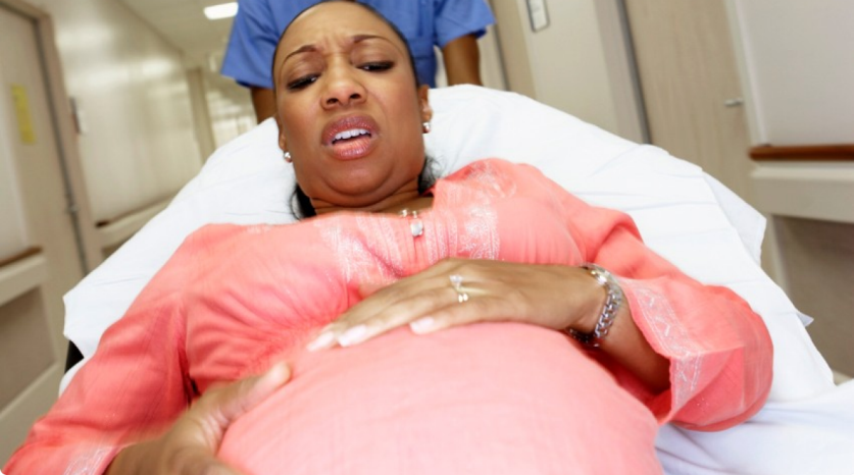Epidural As Labour Pain Relief: Pros & Cons You Should Note

An epidural is one of the several pain relief options you may opt for during labour. It is a type of regional anaesthetic which numbs the nerves that carry pain impulses from the birth canal to the brain injected into the back. It often offers total pain relief, however, in few cases, women who have an epidural labour, especially those with very prolonged or complicated labour, may need to use others forms of pain relief in addition.
Usually, you’ll be required to sit or lie on your side with your back curved outward during an epidural. A very thin tube is then passed through a needle into your back, near the nerves that carry pain impulses from the uterus, to administer the anaesthetic. It takes about 10 minutes to set up and once injected into your back, takes 10 – 15 minutes to have expected effects.
If you are currently pregnant and considering opting for an epidural for a more pleasant experience during labour, here are top pros and cons of this labour pain relief method you should definitely consider to arrive at a very informed decision…
Pros
Can completely numb labour pains and be used continuously throughout labour while you stay awake.
It is considered safe for mother and baby. Very little of the medication goes to your baby as it is injected into your back and this often has little or no effect on baby.
It may help control your blood pressure if becomes high before or during labour. An epidural is also helpful for women with pregnancy induced hypertension.
May speed up prolonged labour fuelled by anxiety. Anxiety during labour may aid excessive production of stress hormones including epinephrine and norepinephrine, which reduce the rate or intensity of contractions. Labour may therefore progress smoothly if a mum is able rest with very minimal or no pains at all as this will have a calming effect, reducing fear and anxiety.
READ ALSO: 11 Common Labour Positions: Pros & Cons
Cons
Limited mobility. Depending on the type of anaesthetic used, your legs may feel heavy and you may not be able to move your legs as much as you want and walk around, even when your need to urinate. A catheter (small tube) may be used to empty your bladder.
However, a ‘walking epidural’ which is a combination of an epidural and a spinal block may give you enough muscle strength to move around during labour but requires monitoring baby’s heart rate remotely. Ask your doctor if necessary equipment and expertise for this is available at your hospital.
Your blood pressure may drop, making you feel dizzy or sick. This may also reduce baby’s heart rate. However, the occurrence of this is said to be rare as an intravenous fluid is usually passed through a vein in your arm to keep your blood pressure at a normal range.
It may prolong the second stage of labour by reducing or eliminating the normal surge of oxytocin and reducing pelvic floor muscle tone. You may not know when it’s time to push if the anaesthetic completely numbs contraction pains. Your midwife or doctor will however let you know, though they’ll likely wait longer for the baby’s head to come down before asking you to start pushing. There is also an increased risk of your baby being delivered by forceps.
To prevent this, less anaesthetic is given towards the end of labour, so you can feel contraction pains and push baby out naturally.
READ ALSO: Pregnancy & Delivery: 7 Pain Relief Options You Should Ask Your Doctor About
Head and back ache. Some mums experience headaches after an epidural labour. Back pains for a few days after labour are also likely. Some mums also experience spinal headache requiring days of bed rest and a blood patch post-delivery. Your doctor will advise appropriate remedies for these and other post-labour symptoms you may have.
Temporary sensation of difficulty breathing may also occur if the anaesthesia affects your chest wall. Your doctor will however be available to monitor the anesthesia’s effect(s) on you and take necessary steps.
Perineal injury. Tears and other injuries are also common with the use of epidurals because of the increased risk of a vacuum or forceps delivery.
You may also experience mild to severe skin itching.
Fever. You may also develop a fever during labour. If the fever is as a result of an infection, you and baby will receive appropriate treatment. Baby may be placed under close observation after delivery.
What pain relief option(s) did you opt for during labour? Do share your experience with other mums below.



The cons is much…… I never request for any pain relief sha…..hanks for sharing
Thanks MIM for sharing. I will still opt for an epidural when the time comes.
I would have requested for it but my hospital stopped giving it before I had my baby
Noted
thnx mim
Thanks for sharing
The pros outweighs the cons. I’m team natural
I will still go for epidural abeg. As far as mother n baby will b safe.